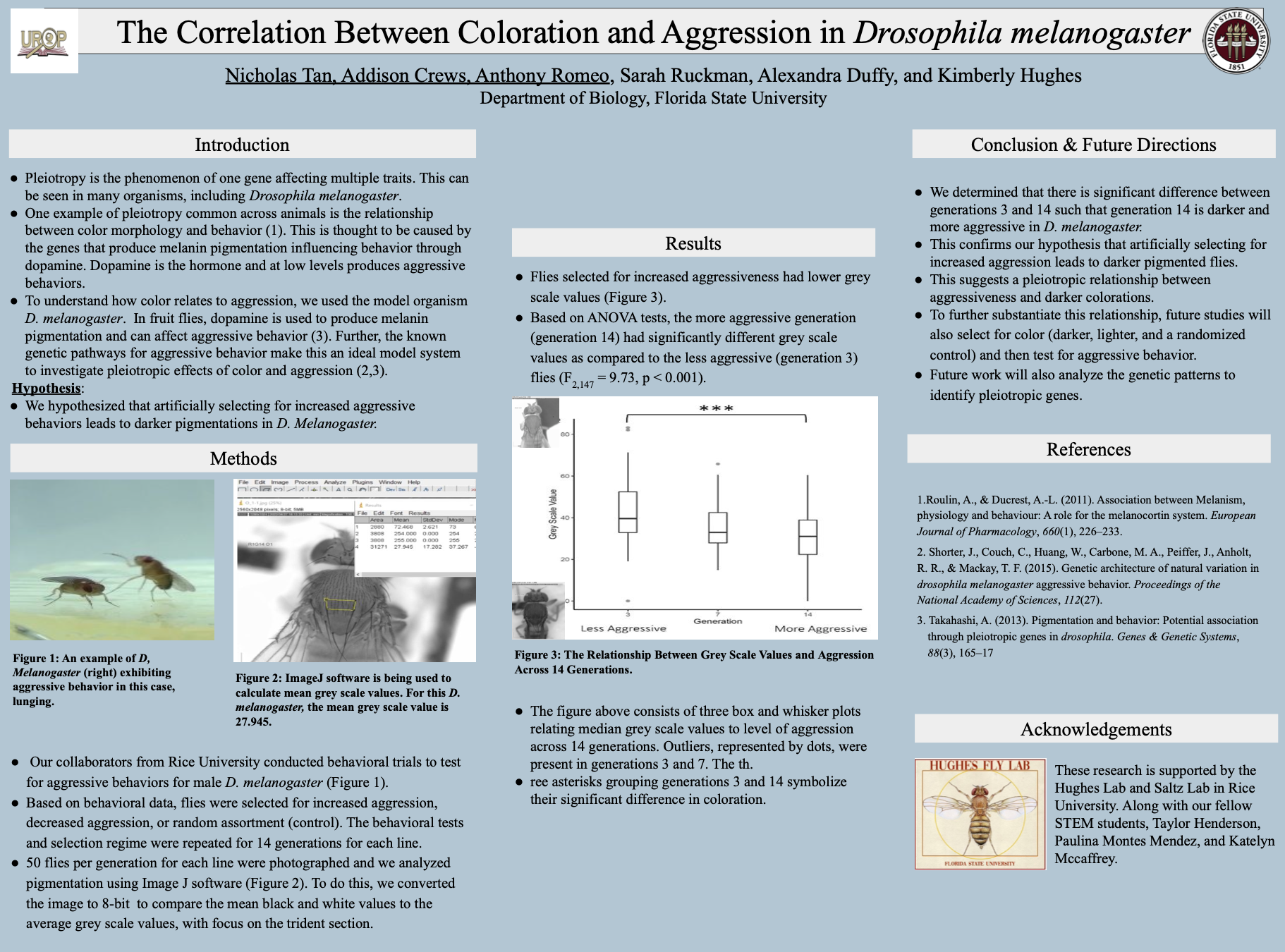Research Symposium
23rd annual Undergraduate Research Symposium, April 6, 2023
Anthony Romero Poster Session 1: 11:00 am - 12:00 pm/ Poster #116
BIO
I am a first gen Colombian American undergraduate student from Deltona Florida. I am majoring in Behavioral Neuroscience and am interested in a career in pharmaceuticals.
The Correlation Between Coloration and Aggression in Drosophila melanogaster
Authors: Anthony Romero, Kimberly HughesStudent Major: Behavioral Neuroscience
Mentor: Kimberly Hughes
Mentor's Department: Biological Sciences Mentor's College: Arts and Sciences Co-Presenters: Addison Crews Nicholas Tan
Abstract
Genomes and their composition have many unknown characteristics but by using study systems such as Drosophila melanogaster, our lab has worked on expanding the knowledge of pleiotropy and applying that knowledge to expand on the concept of genetics. Analyzing the genetic correlation between behavioral aggression and melanin production amongst male Drosophila bridges the gap between genetics and color morphology, uniting genetics and its effects on behavior. By understanding the genetic pathway of the production of melanin and its inhibiting nature on the production of dopamine through melanogenesis leads to the hypothesis that darker pigmentation in Drosophila equates to higher levels of aggressive behaviors. Methods in our study include the conduction of behavioral trials testing for aggressive behaviors such as fencing, boxing, and lunging over multiple generations. Once trials have been conducted by utilizing image software such as ImageJ, our lab analyzes the color pigmentation of the model systems, interpreting the mean scale value of black and white pigmentation of the Drosophila thoracic trident; data collected is used to run statistical tests. Our results so far have shown a generational increase in melanin levels and aggressive behaviors. As we continue our studies in order to reject or fail to reject our hypothesis, we apply our findings to better understand psychological disorders in other organisms as well as the nature of pleiotropic traits.
Keywords: Pleiotropy, Genetics, Behavior


